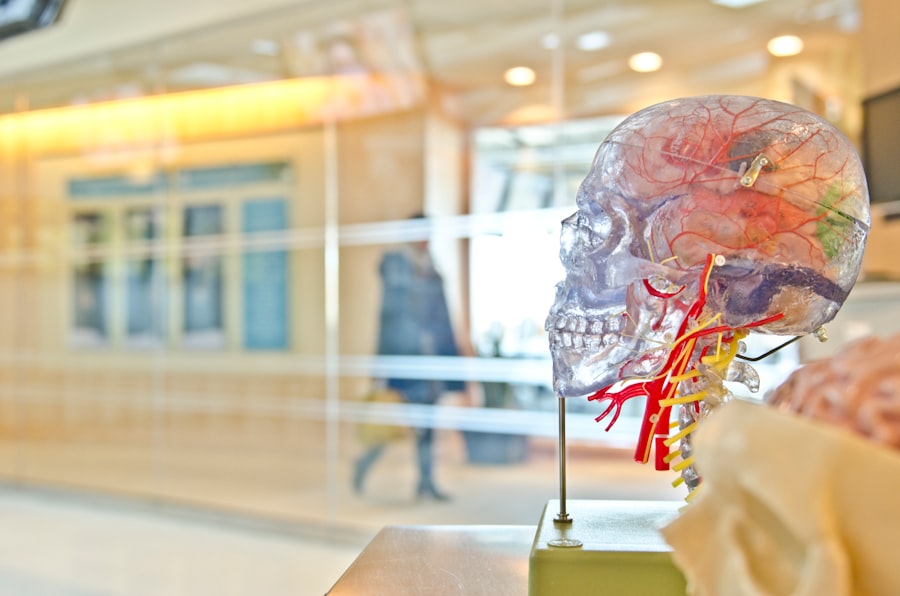Concussions have emerged as a significant concern in the realm of youth sports, with increasing awareness surrounding their prevalence and impact. Recent studies indicate that an estimated 1.6 to 3.8 million sports-related concussions occur annually in the United States alone, with a substantial portion affecting young athletes. Sports such as football, soccer, hockey, and basketball are particularly notorious for high concussion rates, primarily due to the physical nature of these activities.
The growing participation of children and adolescents in organized sports has further amplified the incidence of concussions, as young athletes often engage in high-intensity play without fully understanding the risks involved. This alarming trend has prompted researchers, coaches, and parents alike to scrutinize the safety measures in place to protect young athletes from head injuries. The rise in concussion cases among youth athletes can be attributed to several factors, including increased competition, more aggressive playing styles, and a lack of proper education regarding head injuries.
Many young athletes may not recognize the seriousness of a concussion or may feel pressured to continue playing despite experiencing symptoms. This culture of toughness can lead to underreporting of injuries and a reluctance to seek medical attention. Furthermore, the absence of standardized protocols for concussion management in many youth sports leagues exacerbates the issue, leaving young athletes vulnerable to repeated head injuries.
As awareness grows, it becomes increasingly crucial to address these factors and implement effective strategies to mitigate the risk of concussions in youth sports.
Key Takeaways
- Concussions are prevalent in youth sports, with a significant number of young athletes experiencing this type of injury.
- Long-term effects of concussions on young athletes can include cognitive impairment, mood disorders, and increased risk of neurodegenerative diseases.
- It is important to recognize the signs and symptoms of a concussion, such as headache, dizziness, and confusion, to ensure proper management and treatment.
- Proper concussion management and treatment are crucial for the recovery and long-term well-being of young athletes.
- Strategies for preventing concussions in youth sports include proper equipment fitting, teaching safe playing techniques, and promoting a culture of safety among coaches, parents, and healthcare professionals.
The potential long-term effects of concussions on young athletes
The long-term effects of concussions on young athletes are a growing area of concern among medical professionals and researchers. While many individuals recover from a concussion within a few weeks, there is mounting evidence suggesting that repeated head injuries can lead to chronic neurological issues later in life. Young brains are still developing, making them particularly susceptible to the adverse effects of concussions.
Research has shown that children who sustain multiple concussions may experience cognitive deficits, mood disorders, and even an increased risk of neurodegenerative diseases such as chronic traumatic encephalopathy (CTE). These potential outcomes highlight the importance of understanding the risks associated with concussions and the need for proactive measures to protect young athletes. Moreover, the psychological impact of concussions cannot be overlooked.
Young athletes may experience anxiety, depression, or post-traumatic stress disorder (PTSD) following a concussion, particularly if they feel unsupported or pressured to return to play prematurely. The fear of being sidelined or losing their position on a team can exacerbate these feelings, leading to a cycle of mental health challenges that can persist long after the physical symptoms have resolved. As such, it is essential for parents, coaches, and healthcare providers to recognize the potential long-term consequences of concussions and prioritize the mental well-being of young athletes alongside their physical recovery.
Recognizing the signs and symptoms of a concussion

Recognizing the signs and symptoms of a concussion is crucial for ensuring timely intervention and appropriate care for young athletes. Concussions can manifest in various ways, and symptoms may not always be immediately apparent. Common indicators include headaches, dizziness, confusion, balance problems, and sensitivity to light or noise.
Additionally, young athletes may exhibit behavioral changes such as irritability or mood swings, which can be easily overlooked or misattributed to other factors. It is essential for coaches and parents to be vigilant in observing any changes in an athlete’s behavior or performance following a potential head injury. In some cases, symptoms may not surface until hours or even days after the initial injury, making it imperative for those involved in youth sports to maintain an open line of communication with athletes.
Educating young athletes about the importance of reporting any concerning symptoms is vital in fostering a culture of safety within sports teams. Furthermore, implementing baseline testing before the season begins can provide valuable data for comparison should a concussion occur. By recognizing the signs and symptoms early on and taking appropriate action, stakeholders can significantly reduce the risk of long-term complications associated with concussions.
The importance of proper concussion management and treatment
| Metrics | Data |
|---|---|
| Concussion Incidence | 1.6-3.8 million sports-related concussions occur annually in the United States |
| Concussion Symptoms | Headache, dizziness, nausea, confusion, sensitivity to light and noise |
| Proper Management | Early recognition, proper evaluation, and appropriate treatment are crucial |
| Long-term Effects | Untreated concussions can lead to long-term cognitive and emotional issues |
| Return to Play | Gradual return to physical and cognitive activities is essential for recovery |
Proper concussion management and treatment are critical components in safeguarding the health and well-being of young athletes. Following a suspected concussion, it is essential for athletes to undergo a thorough evaluation by a qualified healthcare professional who specializes in sports medicine or neurology. This evaluation should include a comprehensive assessment of cognitive function, balance, and coordination to determine the severity of the injury and establish an appropriate recovery plan.
Adhering to established guidelines for return-to-play protocols is vital; these protocols typically involve a gradual progression through various stages of physical activity while monitoring for any recurrence of symptoms. In addition to physical recovery, addressing cognitive rest is equally important in concussion management. Young athletes should be encouraged to limit activities that require intense concentration or mental exertion during their recovery period.
This includes reducing screen time and refraining from academic pressures that could exacerbate symptoms. A multidisciplinary approach involving coaches, parents, and healthcare providers can facilitate effective communication and ensure that young athletes receive the support they need throughout their recovery journey. By prioritizing proper management and treatment protocols, stakeholders can help mitigate the risk of long-term complications associated with concussions.
Strategies for preventing concussions in youth sports
Preventing concussions in youth sports requires a multifaceted approach that encompasses education, rule changes, and safety equipment enhancements. One effective strategy is implementing educational programs aimed at coaches, parents, and athletes themselves. These programs can provide valuable information about the risks associated with concussions, how to recognize symptoms, and the importance of reporting injuries promptly.
By fostering a culture of safety within sports teams and encouraging open communication about head injuries, stakeholders can create an environment where young athletes feel empowered to prioritize their health. In addition to education, modifying rules within youth sports can significantly reduce the risk of concussions. For instance, enforcing stricter penalties for dangerous plays or implementing age-appropriate modifications to contact sports can help minimize head injury risks.
Furthermore, ensuring that athletes wear appropriate protective gear—such as helmets designed specifically for their sport—can provide an additional layer of safety. Regular equipment checks and adherence to safety standards are essential in maintaining optimal protection for young athletes. By combining education with proactive rule changes and safety measures, stakeholders can work together to create safer sporting environments for youth.
The role of coaches, parents, and healthcare professionals in concussion awareness

Coaches, parents, and healthcare professionals play pivotal roles in promoting concussion awareness and ensuring the safety of young athletes. Coaches are often on the front lines when it comes to identifying potential head injuries during practices and games. Their training should include recognizing signs and symptoms of concussions as well as understanding when it is necessary to remove an athlete from play for further evaluation.
By fostering an environment where safety is prioritized over competition, coaches can set a positive example for their teams and encourage open discussions about head injuries. Parents also have a crucial role in concussion awareness by educating themselves about the risks associated with youth sports and advocating for their children’s health. They should maintain open lines of communication with their children regarding any concerns about head injuries and encourage them to report symptoms without fear of repercussions.
Healthcare professionals contribute by providing accurate assessments and guidance on concussion management protocols. Collaboration among coaches, parents, and healthcare providers is essential in creating a comprehensive support system that prioritizes athlete safety while promoting awareness about concussions.
The impact of concussions on academic performance and cognitive function
The impact of concussions extends beyond physical health; they can also significantly affect academic performance and cognitive function in young athletes. Research has shown that students who have sustained concussions may experience difficulties with concentration, memory retention, and overall cognitive processing speed. These challenges can hinder academic performance and lead to frustration or anxiety regarding schoolwork.
As such, it is crucial for educators to be aware of the potential cognitive effects of concussions on students involved in sports. Additionally, the pressure to perform academically while recovering from a concussion can exacerbate stress levels for young athletes. Many students may feel torn between their responsibilities as athletes and their academic obligations, leading to increased anxiety during recovery periods when they may need to take time off from school or limit their cognitive activities.
Schools should implement supportive measures for students recovering from concussions by providing accommodations such as extended deadlines or reduced workloads during their recovery phase. By recognizing the interconnectedness between athletic participation and academic performance, stakeholders can better support young athletes navigating these challenges.
The latest research and developments in concussion protocols for youth athletes
The field of concussion research is rapidly evolving, with ongoing studies aimed at improving protocols for managing head injuries among youth athletes. Recent advancements include the development of more sophisticated diagnostic tools that allow for better assessment of concussions at the time of injury. For instance, researchers are exploring the use of advanced imaging techniques such as functional MRI (fMRI) to identify subtle changes in brain function that may not be detectable through traditional methods.
These innovations hold promise for enhancing our understanding of concussions and refining treatment approaches tailored specifically for young athletes. Moreover, there has been a growing emphasis on establishing standardized return-to-play protocols based on evidence-based practices rather than anecdotal experiences. Organizations such as the CDC (Centers for Disease Control and Prevention) have developed comprehensive guidelines that outline step-by-step processes for safely returning young athletes to play following a concussion.
These guidelines emphasize gradual progression through physical activity levels while closely monitoring symptoms throughout recovery. As research continues to advance our understanding of concussions’ complexities, it is essential for stakeholders involved in youth sports to stay informed about these developments and implement best practices that prioritize athlete safety above all else.
If you’re seeking further information on how your data is managed on our site, especially in relation to topics like CTE (Chronic Traumatic Encephalopathy), you might find our Terms of Use page particularly useful. This page outlines the legal considerations and usage guidelines for all content and services provided, ensuring you understand your rights and responsibilities when accessing or contributing to our discussions on sensitive health topics.
FAQs
What is CTE?
CTE stands for chronic traumatic encephalopathy, which is a degenerative brain disease that is found in individuals who have a history of repetitive brain trauma, such as athletes who have experienced concussions.
What are the symptoms of CTE?
The symptoms of CTE can vary, but may include memory loss, confusion, impaired judgment, impulse control problems, aggression, depression, anxiety, and suicidal thoughts or behavior.
How is CTE diagnosed?
Currently, CTE can only be diagnosed after death by examining the brain tissue for the presence of abnormal protein deposits. However, researchers are working on developing methods to diagnose CTE in living individuals, such as through brain imaging techniques.
What causes CTE?
CTE is caused by repetitive brain trauma, such as concussions or subconcussive hits, that result in the accumulation of abnormal protein deposits in the brain.
Who is at risk for CTE?
Individuals who participate in contact sports, such as football, boxing, and hockey, as well as military personnel and victims of domestic violence, are at a higher risk for developing CTE due to their increased likelihood of experiencing repetitive brain trauma.



